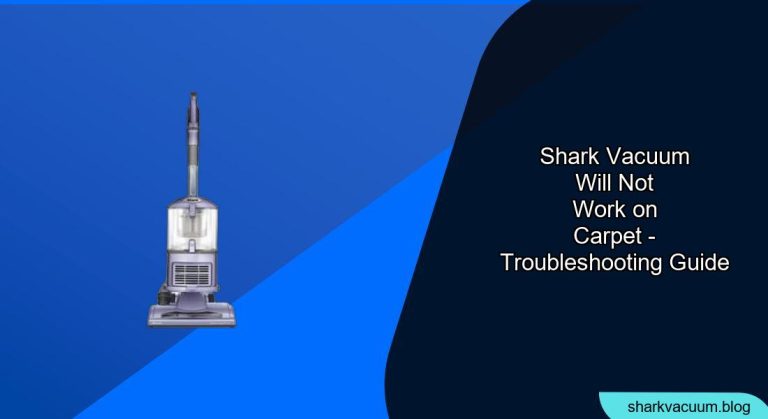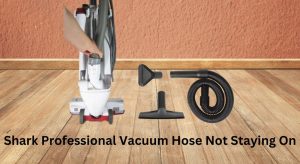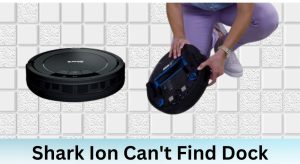Is your Shark vacuum struggling on carpets, leaving you with frustration and unfinished cleaning? You’re not alone. Many Shark vacuum owners experience this issue. This article will explore common reasons why your Shark vacuum might not be performing well on carpets, and provide step-by-step solutions to get it running smoothly again.
A Shark vacuum’s inability to effectively clean carpets can stem from a variety of issues, ranging from simple fixes to more complex problems. Understanding the root cause is crucial for efficient troubleshooting. This guide provides comprehensive solutions, ensuring you can restore your Shark vacuum’s carpet-cleaning performance. Let’s dive into diagnosing and resolving the issue, and offer some preventative measures to keep your vacuum in top shape.
Table of Contents
Identifying the Problem: Why Your Shark Vacuum Struggles on Carpet

Several factors can contribute to your Shark vacuum’s poor performance on carpets. Here are some of the most common culprits:
- Clogged Brush Roll: Hair, fibers, and debris can wrap around the brush roll, hindering its ability to agitate carpet fibers.
- Full Dust Cup: An overfilled dust cup restricts airflow, reducing suction power and overall cleaning effectiveness.
- Dirty Filters: Clogged filters impede airflow, diminishing suction and causing the motor to overheat.
- Incorrect Height Setting: Using the wrong height setting can prevent the brush roll from properly contacting the carpet.
- Suction Leaks: Cracks or loose connections in the hose or other parts can cause loss of suction.
Step-by-Step Troubleshooting Guide
Follow these steps to diagnose and fix your Shark vacuum’s carpet-cleaning issues:
1. Empty the Dust Cup
A full dust cup is one of the most common causes of reduced suction.
- Action: Empty the dust cup after each use, or when it reaches the “full” line.
- How to: Detach the dust cup from the vacuum, open the bottom, and empty the contents into a trash bin. Tap gently to dislodge any stuck debris.
- Pro Tip: Consider emptying the dust cup outside to minimize dust dispersal.
2. Clean or Replace the Filters
Dirty filters significantly restrict airflow, impacting suction power.
- Action: Clean the filters every 1-3 months, and replace them every 6-12 months, depending on usage and filter type.
- How to:
- Locate the filters (usually near the dust cup or motor).
- Remove the filters.
- Tap the filters gently to remove loose dirt.
- Rinse the foam filters with lukewarm water.
- Allow the filters to air dry completely (at least 24 hours) before reinstalling. Do not use a hairdryer or place in direct sunlight.
- Replace the HEPA filter according to the manufacturer’s instructions.
- Warning: Never operate the vacuum without the filters in place, as this can damage the motor.
Considering a Filter Replacement? If your filters remain clogged or damaged despite regular cleaning, it’s time to replace them for optimal vacuum performance. Find a wide selection of replacement filters compatible with your vacuum on Amazon.
3. Inspect and Clean the Brush Roll
A tangled brush roll can’t effectively agitate carpet fibers.
- Action: Clean the brush roll regularly, especially if you have pets or long hair.
- How to:
- Turn off and unplug the vacuum.
- Locate the brush roll access panel (usually on the bottom of the vacuum head).
- Remove the panel and take out the brush roll.
- Use scissors or a seam ripper to carefully cut away any hair, string, or fibers wrapped around the brush roll.
- Remove any remaining debris.
- Reinstall the brush roll and access panel.
- Pro Tip: Use a brush roll cleaning tool (often included with the vacuum) to easily remove tangled hair.
4. Check for Blockages in the Hose and Attachments
Obstructions in the hose or attachments can severely limit suction.
- Action: Inspect and clear any blockages in the hose, wand, and attachments.
- How to:
- Detach the hose from the vacuum body and the vacuum head.
- Look through the hose to identify any visible blockages.
- Use a broom handle or similar tool to gently dislodge any obstructions.
- Check the wand and attachments for blockages as well.
- Reassemble the hose and attachments.
- Warning: Do not use sharp objects to clear blockages, as this could damage the hose.
Is Your Hose Damaged Beyond Repair? Sometimes, even after clearing blockages, a hose can be cracked, torn, or permanently stretched, significantly reducing suction. Browse a selection of replacement hoses and attachments for your vacuum model on Amazon.
5. Adjust the Height Setting
Using the appropriate height setting ensures optimal contact between the brush roll and the carpet.
- Action: Adjust the height setting based on your carpet type.
- How to:
- Locate the height adjustment dial or buttons on the vacuum.
- Select the appropriate setting for your carpet (low, medium, or high pile).
- Test the vacuum on a small area of the carpet to ensure it’s cleaning effectively.
- Pro Tip: Start with the highest setting and gradually lower it until you achieve the best suction and cleaning performance.
6. Inspect for Suction Leaks
Cracks or loose connections can cause a loss of suction.
- Action: Inspect the hose, connections, and seals for any signs of damage or wear.
- How to:
- Visually inspect the hose for cracks or holes.
- Check the connections between the hose, wand, and vacuum body to ensure they are secure.
- Replace any damaged parts.
- Pro Tip: Wrap duct tape around any small cracks in the hose as a temporary fix until you can replace it.
Practical Elements for Optimal Carpet Cleaning
Tools/Materials
- Scissors or seam ripper
- Broom handle or similar tool
- Duct tape (optional, for temporary repairs)
- Replacement filters (if needed)
- Brush roll cleaning tool (optional)
Preparation Steps
- Unplug the vacuum before performing any maintenance.
- Gather the necessary tools and materials.
- Work in a well-lit area.
Troubleshooting Guide
| Problem | Possible Cause | Solution |
|---|---|---|
| Vacuum struggles to move on carpet | Incorrect height setting | Adjust the height setting to the appropriate level for your carpet type. |
| Weak suction | Full dust cup, clogged filters | Empty the dust cup and clean or replace the filters. |
| Brush roll not spinning | Tangled brush roll | Clean the brush roll by removing hair and debris. |
| Vacuum overheating | Clogged filters, blocked hose | Clean or replace the filters and check for blockages in the hose. |
| Unusual noises | Blocked hose, damaged brush roll | Check for blockages and inspect the brush roll for damage; replace if needed. |
FAQ Section
Why does my Shark vacuum lose suction so quickly?
A primary reason for a Shark vacuum losing suction quickly is often a full dust cup or clogged filters. Emptying the dust cup regularly and cleaning the filters every 1-3 months can significantly improve and maintain suction power. Additionally, check for any blockages in the hose or attachments that may be restricting airflow.
How often should I replace the filters on my Shark vacuum?
The frequency of filter replacement depends on usage, but generally, foam filters should be cleaned every 1-3 months and replaced every 6-12 months. HEPA filters should be replaced every 6-12 months as well. Regular maintenance ensures optimal performance and prolongs the life of your vacuum.
Can I wash the HEPA filter in my Shark vacuum?
While foam filters can be washed, HEPA filters typically cannot. Washing a HEPA filter can damage its fine filtration capabilities. Instead, gently tap the HEPA filter to remove loose dirt and replace it as recommended by the manufacturer, usually every 6-12 months.
Why is my Shark vacuum leaving dirt behind on the carpet?
If your Shark vacuum is leaving dirt behind, it could be due to a few reasons: a clogged brush roll preventing proper agitation, incorrect height settings for your carpet type, or weak suction from a full dust cup or dirty filters. Addressing these issues can improve cleaning effectiveness.
What is the best way to prevent hair from wrapping around the brush roll?
To minimize hair wrapping around the brush roll, regularly clean the brush roll after each use. Use scissors or a seam ripper to carefully remove any tangled hair. Some Shark models come with self-cleaning brush rolls designed to prevent hair tangles, which can be a helpful feature.
How do I know if my Shark vacuum needs professional repair?
If you’ve tried all the troubleshooting steps and your vacuum still isn’t performing well, it may need professional repair. Signs include a burning smell, unusual noises, or complete loss of power. Contact Shark customer support or a qualified appliance repair technician.
Tips, Warnings, and Best Practices
- Safety First: Always unplug the vacuum before performing any maintenance or repairs.
- Regular Maintenance: Empty the dust cup and clean the filters regularly to maintain optimal performance.
- Proper Storage: Store the vacuum in a clean, dry place to prevent damage.
- Avoid Overloading: Do not try to vacuum up large or heavy objects, as this can damage the vacuum.
- Read the Manual: Refer to your Shark vacuum’s user manual for specific maintenance instructions and troubleshooting tips.
Conclusion
A Shark vacuum that’s not working on carpet can be a frustrating problem, but with the right troubleshooting steps, you can often resolve the issue yourself. By regularly maintaining your vacuum, addressing common problems like clogged brush rolls and dirty filters, and using the correct settings, you can keep your Shark vacuum running smoothly and effectively cleaning your carpets for years to come.
Take action today by implementing these solutions and enjoy a cleaner, healthier home. If problems persist, consider contacting Shark customer support for further assistance.







